Truffle: A black diamond on your table!
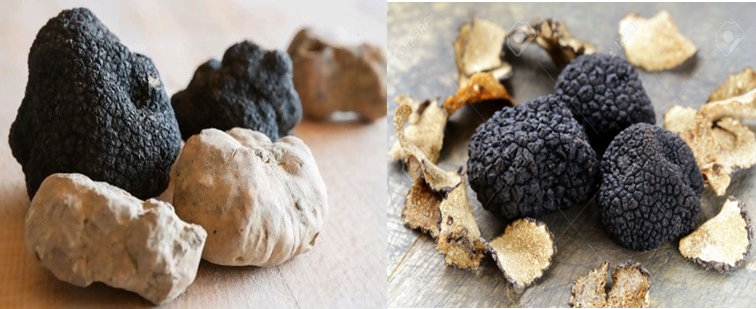
The truffle is a completely natural product, which stands out for its high nutritional and culinary value. It is one of the most rare and sought after species of mushrooms that grow underground (at a depth of 6-15 cm) on the roots of certain trees (about 50 species such as cedar, hazel, oak, olive, pine, the oak, cherry, almond, willow, poplar, etc.) or shrubs. In recent years the demand tends to grow continuously at both European and global level, making it one of the most expensive and exquisite dishes. But what are the characteristics that make it so sought after?
First of all, truffle is a very nutritious food which protects and enhance human health. More specifically:
-It is low in calories and high in water content (80-99%), which assists in weight loss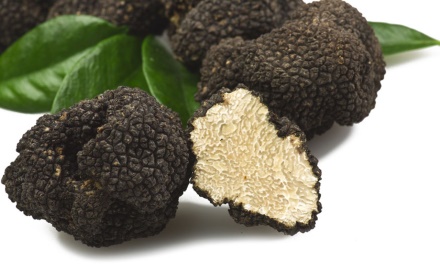
– It is rich in proteins
-It is an excellent source of vitamins (B1, B2, B3, B12, D), fiber and trace elements, while exhibiting a high content of amino acids and fatty acids.
It also has important pharmaceutical / therapeutic properties:
– It strengthens the circulatory and nervous system and soothes muscular and arthritic pain
–It has antithrombotic activity, contributing to the proper functioning of the heart, and helps to reduce cholesterol (because of pantothenic acid)
–Prevents depression
-It is aphrodisiac
It is regarde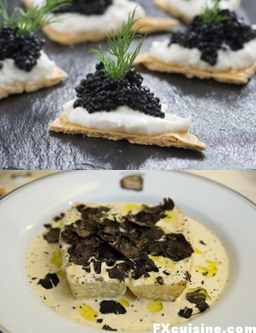 d as a luxury food and is preferred by connoisseurs of fine cuisine because of its unique flavor and the rich aroma, characteristics that can turn any dish to an unforgettable culinary experience. It is mainly used on poultry, beef, pork and dears in pasta sauce and rice, as well as raw, grated or chopped. Apart from fresh, truffle is available in other forms, such as in jars with water or oil and salt in paste form, alone or together with other mushrooms and herbs, as well as in cans. It can be also added in fragrance oil, vinegar sauces, cheese, butter and even honey.
d as a luxury food and is preferred by connoisseurs of fine cuisine because of its unique flavor and the rich aroma, characteristics that can turn any dish to an unforgettable culinary experience. It is mainly used on poultry, beef, pork and dears in pasta sauce and rice, as well as raw, grated or chopped. Apart from fresh, truffle is available in other forms, such as in jars with water or oil and salt in paste form, alone or together with other mushrooms and herbs, as well as in cans. It can be also added in fragrance oil, vinegar sauces, cheese, butter and even honey.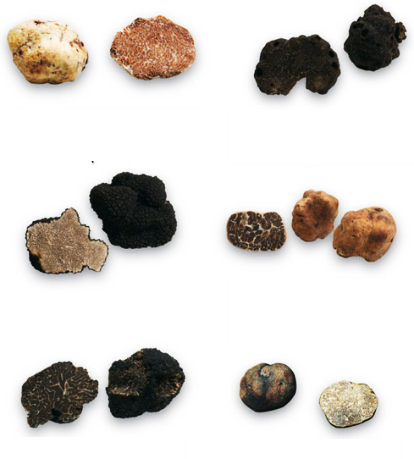
Nowadays, about 70 species of truffle have recorded worldwide, of which 30 are located exclusively in Europe and around 27 species of them grow in Greece. The shape of the truffle is almost round with irregular form, and its size range from 2-7 cm. Its color range from dark gray to black and white and weight from a few grams to 2 kilograms. The five most commercial species of truffles are: the tuber aestivum (summer black), the tuber brumale, the tuber magnatum (white), the tuber melanosporum (winter black) and tuber borchii.
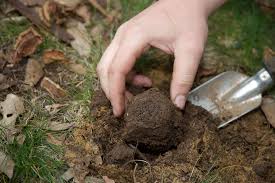 Truffle grows in mountainous, semi-mountainous terrain rich in minerals (eg calcium, potassium, nitrogen, phosphorus, clay) with a high pH (7,2 – 8) and an altitude of 300-1000 m. The climate of those terrains can be characterized as Mediterranean (little rainfall during the summer months), while the cultivation ensures high financial rewards due to the increased demand worldwide in combination with the slight supply. Indeed, sale price can amount to over € 6000 per kilo, while in many cases the crops are sold in advance.
Truffle grows in mountainous, semi-mountainous terrain rich in minerals (eg calcium, potassium, nitrogen, phosphorus, clay) with a high pH (7,2 – 8) and an altitude of 300-1000 m. The climate of those terrains can be characterized as Mediterranean (little rainfall during the summer months), while the cultivation ensures high financial rewards due to the increased demand worldwide in combination with the slight supply. Indeed, sale price can amount to over € 6000 per kilo, while in many cases the crops are sold in advance.
Cultivation and consumption truffle has made remarkable progress over the last decade. It is noted tha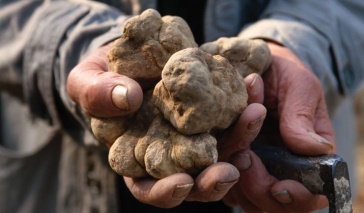 t Italy, Spain and France cover 1/10 of the world demand, being at the same time as the main consumer countries of this product. Europe actually consumes half the domestic production and exports the rest. It is worth mentioning that, Spain and Poland increased truffle exports by 50% over the four last years (2011-2015). The main importing countries of truffle that has produced in Europe are Germany, Russia, USA, France, Japan and Italy.
t Italy, Spain and France cover 1/10 of the world demand, being at the same time as the main consumer countries of this product. Europe actually consumes half the domestic production and exports the rest. It is worth mentioning that, Spain and Poland increased truffle exports by 50% over the four last years (2011-2015). The main importing countries of truffle that has produced in Europe are Germany, Russia, USA, France, Japan and Italy.
Europe is the biggest exporter of truffle worldwide, accounting for 85% of the total volume truffle exported to the international market, followed by China with 10% and North Africa (5%). Both China and North Africa are the largest suppliers of Europe, exporting almost the entire production. With regard to North America, although it produces large amounts of truffle, they are primarily intended to meet domestic demand.
 Truffle cultivation is not widespread in Greece as it is a new and innovative product. However, the geomorphological and climatic conditions of our country, which are ideal for the development of high quality truffles, can favor large production. Already, small quantities that have produced domestically receive positive comments by foreign markets.
Truffle cultivation is not widespread in Greece as it is a new and innovative product. However, the geomorphological and climatic conditions of our country, which are ideal for the development of high quality truffles, can favor large production. Already, small quantities that have produced domestically receive positive comments by foreign markets.
Truffle is a superfood that significantly benefits the human body, and is a delicacy that is increasingly used in international cuisines. The ever increasing demand and the consequent high price on the international market entails substantial profits for those engaged with cultivation, especially in Greece where climate and soil favor the production of high quality truffle.
References : Popi Athanasopoulou(2011), Tsitsipati Vaia(2011), Voula Neonaki -Christoforos Papadakis (2015),www.mapsofworld.com, www.trademap.org, www.foodcross.com

